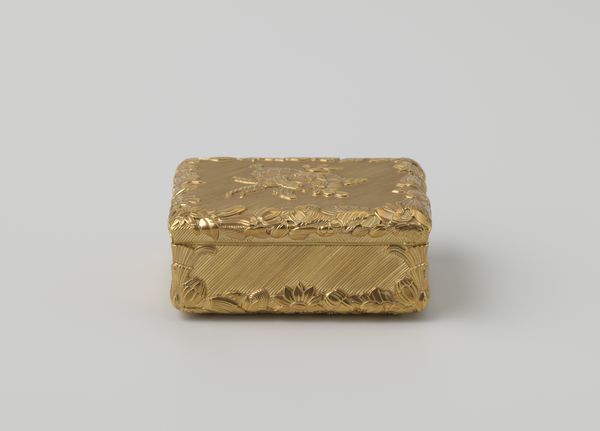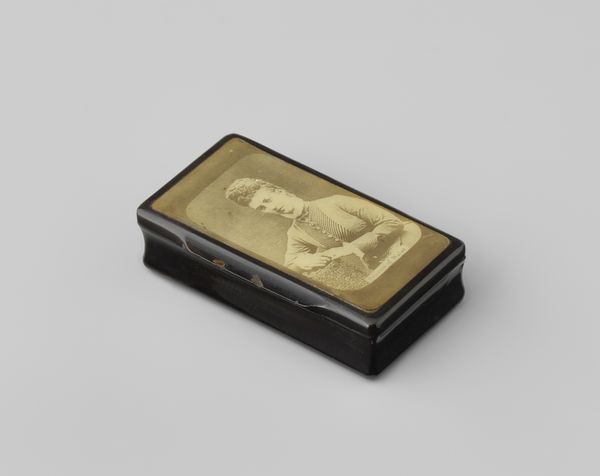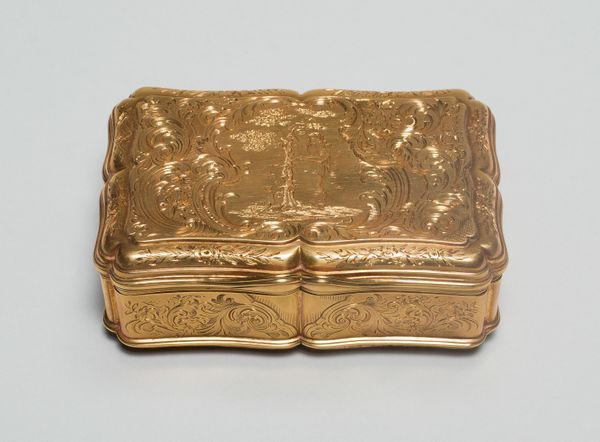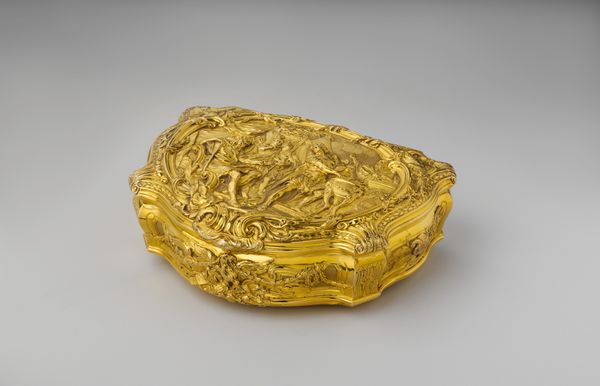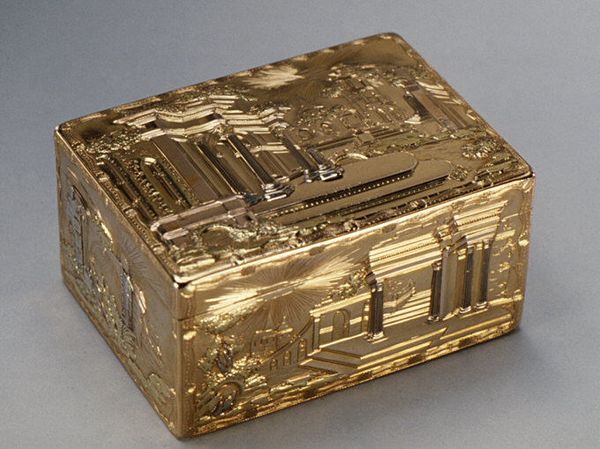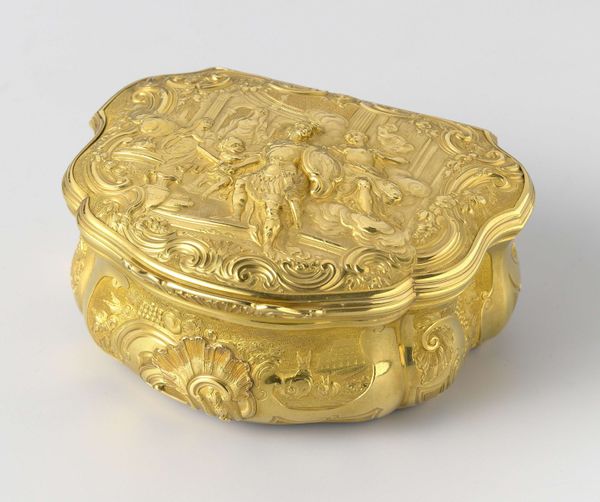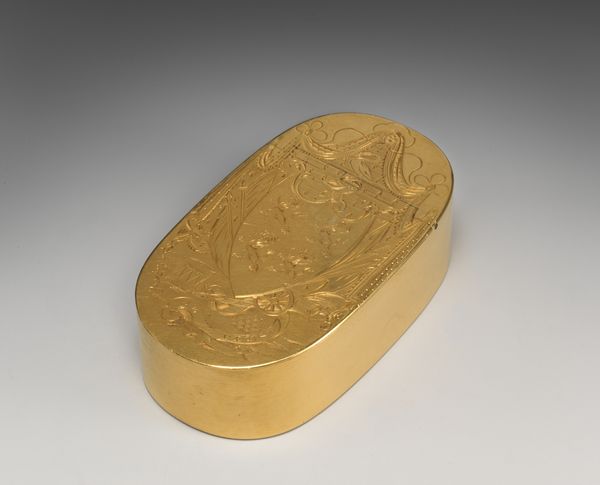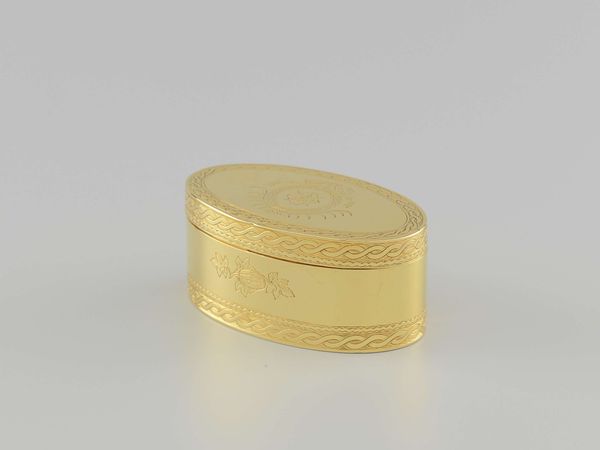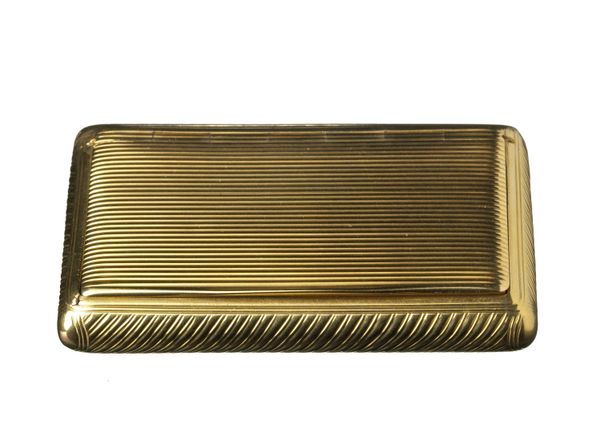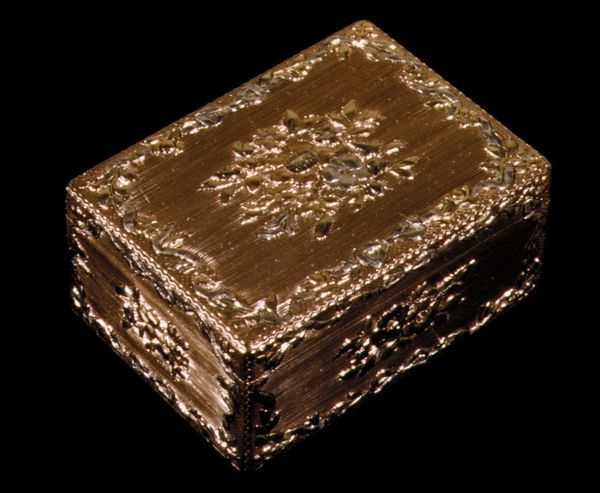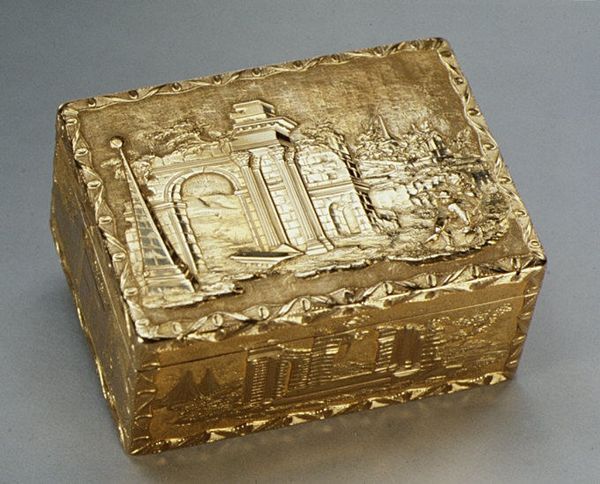
Dimensions: 1 1/16 x 3 3/8 x 2 5/8 in. (2.7 x 8.57 x 6.67 cm) (closed)
Copyright: Public Domain
Curator: Here we have a Snuffbox, estimated to be made around 1860, possibly by Conrad Josef Lameyer. Editor: Wow, the density of detail! It practically vibrates with opulence. You can almost feel the weight of the gold, and imagine the hours of labor. Curator: Absolutely. The box showcases the Rococo style revival that was popular at the time. Snuffboxes were status symbols, signaling refinement and social standing. Owning such an object allowed individuals to participate in social rituals, such as offering pinches of tobacco. Editor: Think about the actual hands that crafted this – the goldsmith, meticulously working the metal. How much of their own lives, their own sweat equity, is literally embedded in this display of wealth? What were the working conditions? The consumption of this good had very material costs to the workforce and ecological system involved in procuring the gold and constructing the item. Curator: Those are important considerations. And consider the commissioning of such a work—the networks of power and patronage at play in the mid-19th century. Objects like these reinforced class distinctions, visually declaring hierarchy through material possession. This box and snuff-taking were part of an elaborate choreography of courtly life. Editor: Exactly, it's all meticulously staged. But I also find myself drawn to the relief work; those tiny flowers and scrolling foliage practically obscure the metal it is fashioned out of. Curator: That intense ornamentation definitely reflects the era's embrace of ornate, naturalistic motifs in decorative arts. These features, along with the enamel work, all coalesce into the aesthetic values of the period. The snuffbox speaks to evolving social and political structures, demonstrating its place in history beyond its surface appeal. Editor: And the labor...all those obscured processes and forms. I leave wondering if that initial flash of luxury transforms into a more discomforting feeling the longer we are able to consider this artifact and its contexts. Curator: Precisely. This object serves as a poignant reminder of art's involvement in social history, asking how aesthetic choices affect broader power dynamics.
Comments
No comments
Be the first to comment and join the conversation on the ultimate creative platform.
